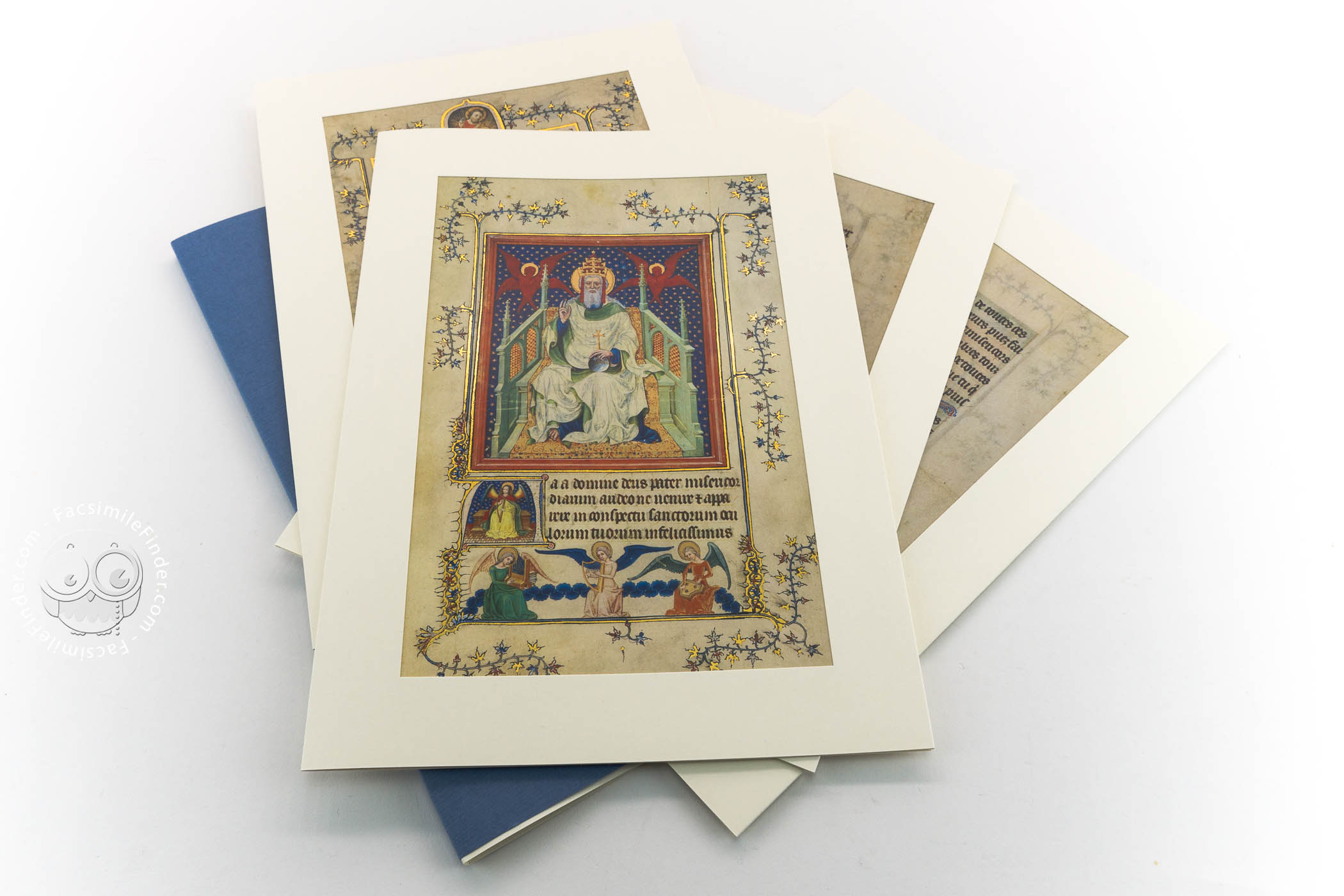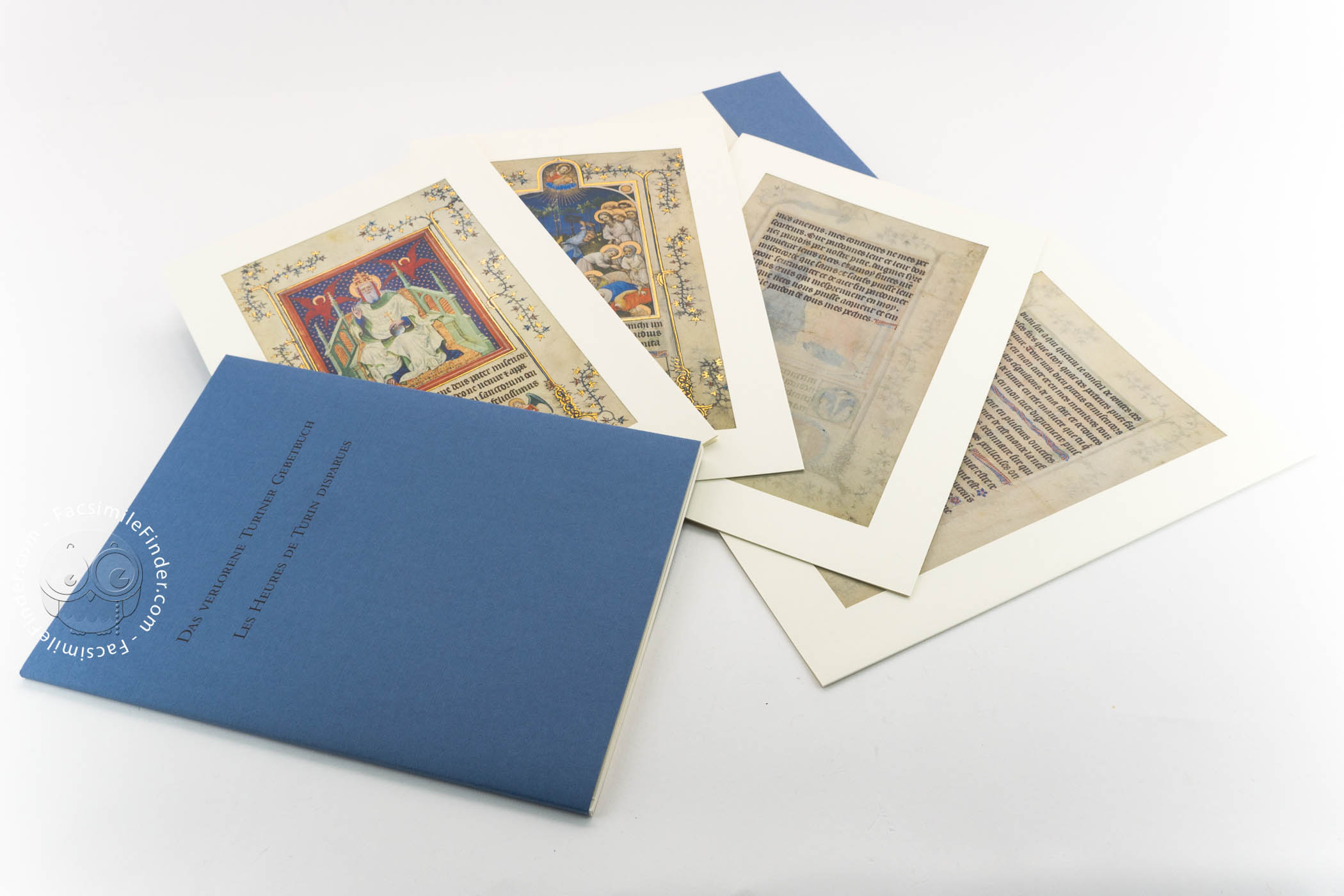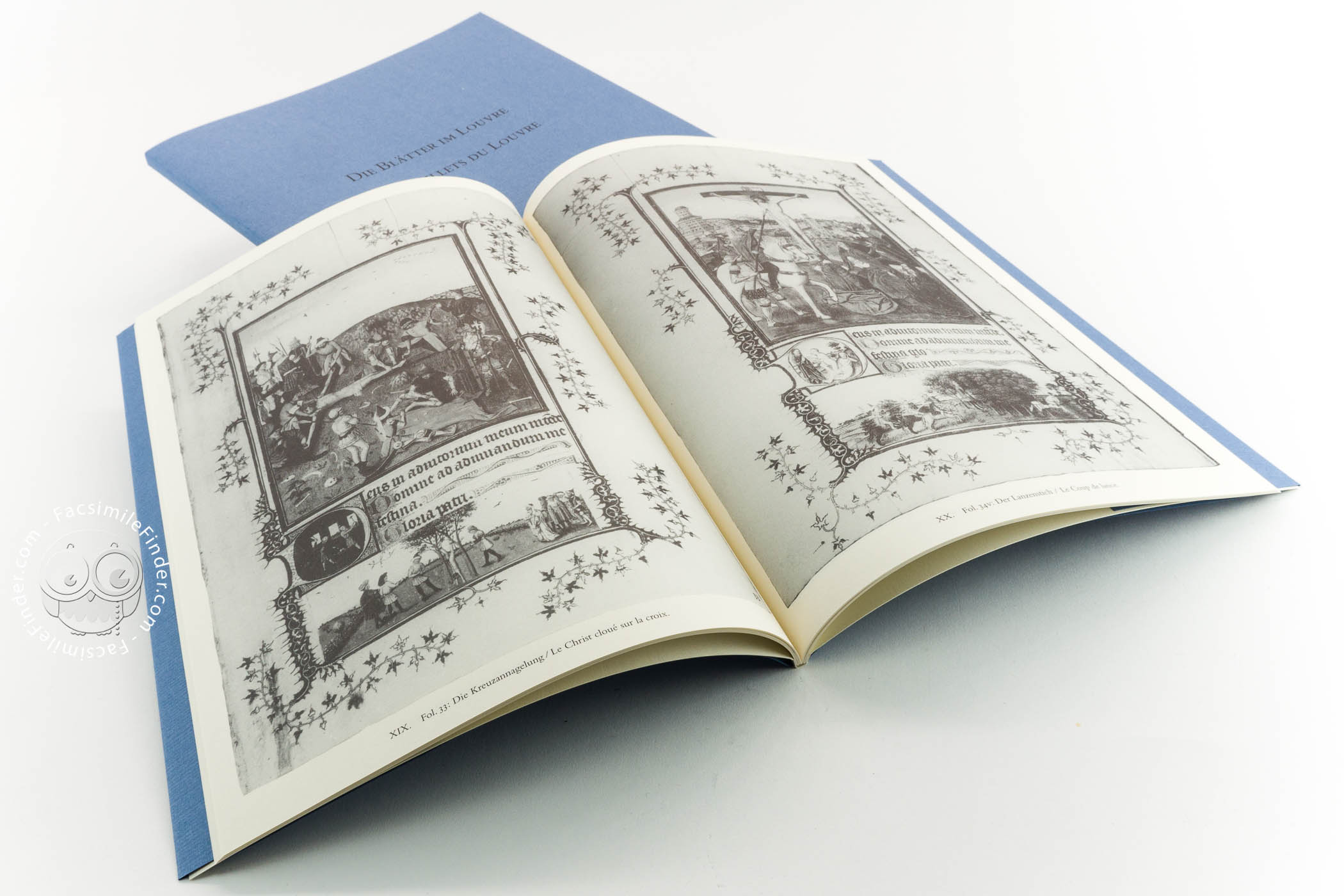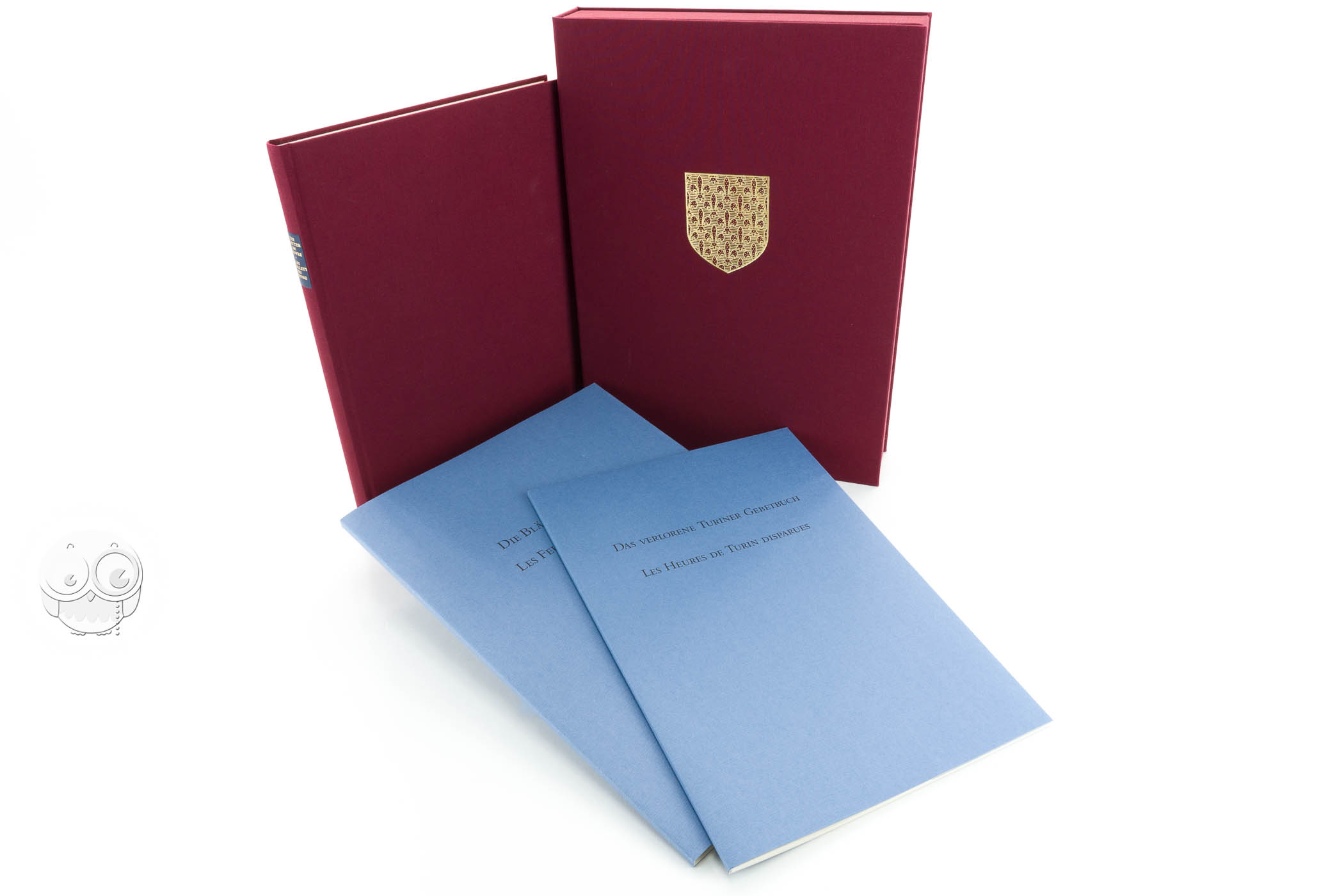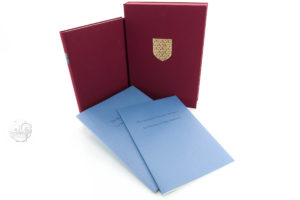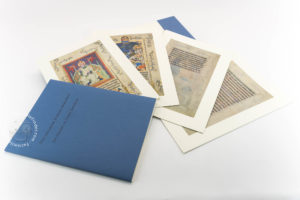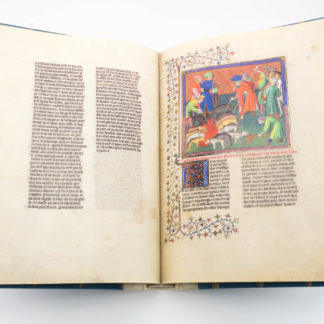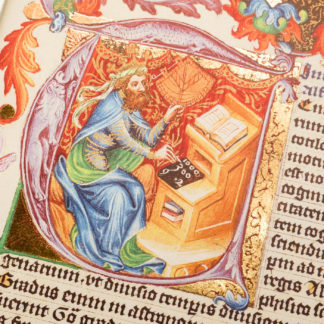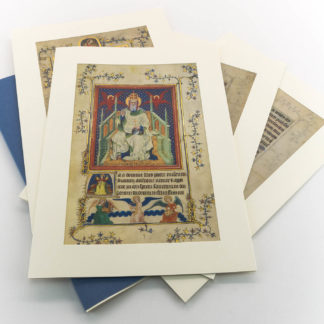Description
Facsimile limited edition containing leaves from different repositories (Musée du Louvre andBiblioteca Nazionale Universitaria di Torino) once belonged to a unique manuscript, featuring:
- Edition details: Blätter im Louvre – Lucerne or Munich: Faksimile Verlag, 1994
- Commentary: German and French by König Eberhard, Bartz Gabriele, Giaccaria Angelo and Huot François
- Notes: reproduction in full color and original size of 5 miniatures from the 4 leaves at the Musée du Louvre, RF 2022-2025 (Départment des arts graphiques). The facsimile features a black and white reproduction of the leaves from the related manuscript Book of hours at the Biblioteca Nazionale Universitaria di Torino, Hs. K.IV.29.
- Case: cardboard box
About the original manuscript: Turin-Milan Hours
The Turin-Milan Hours were ordered by a series of art lovers over a period of more than fifty years uniting two leading artistic currents of the southern side of the Alps and thus presenting a true treasure trove of painting styles. In an era of radical changes, two of the most progressive artistic movements are represented in this work, namely those of France and the Low Countries.
While some of the miniatures rank among the most beautiful examples of late Gothic painting in France, others are revolutionary, if not visionary, in style. The latter were celebrated as the beginnings of old Dutch painting and are closely connected with one famous name, Jan van Eyck.
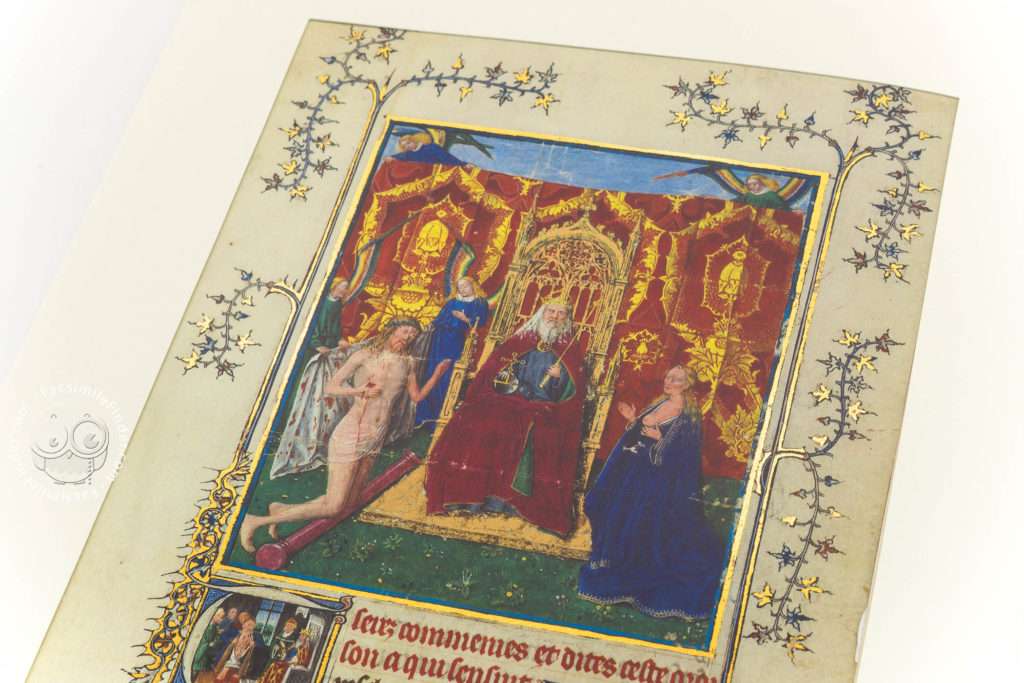
Originally a Monumental Project
The Turin-Milan Hours were created over a period of 70 years. As of 1380 the highest nobility and their court painters took over the production of the manuscript. Initially, there was an ambitious project to create an illuminated manuscript of monumental dimensions.
What we are talking about here, is the last part of this manuscript, today officially called Heures de Turin-Milan. The work was commissioned by the Duke of Berry probably before the turn of the 15th century.
The first painting campaign was carried out by the Master of the Parement de Narbonne. He planned the succession of pages, executed basic sketches and completed several important miniatures himself.
In 1405 the duke had another campaign started under the direction of the Master of John the Baptist. However, the manuscript was still incomplete at the duke’s death in 1416 and was later divided in two parts.
An Exciting and Eventful History
The actual Book of Hours, the Très Belles Heures de Notre-Dame, was passed on to Robinet d’Estampes; the second part consisted of the Heures de Turin on the one hand which burned in 1904 and of which only four leaves remain, today in the Louvre, and of a Missal, our Turin-Milan Hours, on the other hand.
The unfinished work of the 15th century went to Count John of Holland who inherited it. In 1424, John charged the young Jan van Eyck with the completion of the manuscript. Even this time, completion was not achieved.
Jan van Eyck moved to the court of Philip of Burgundy and took the manuscript with him. There the master undertook a second attempt to finish the book, but was interrupted in his work when he died in 1441.
Presumably driven by the wish to set a monument to the artist, Philip of Burgundy had the Missal and Prayer Book finished by another Flemish artist in the tradition of Jan van Eyck.
The further destiny of the manuscript is hidden in the mists of time. It seems to have been divided again in the 16th century. The Turin-Milan Hours later belonged to the Count of Aglié who passed it on to the Princes of Trivulzio who finally donated it to the Museo Civico in Turin.
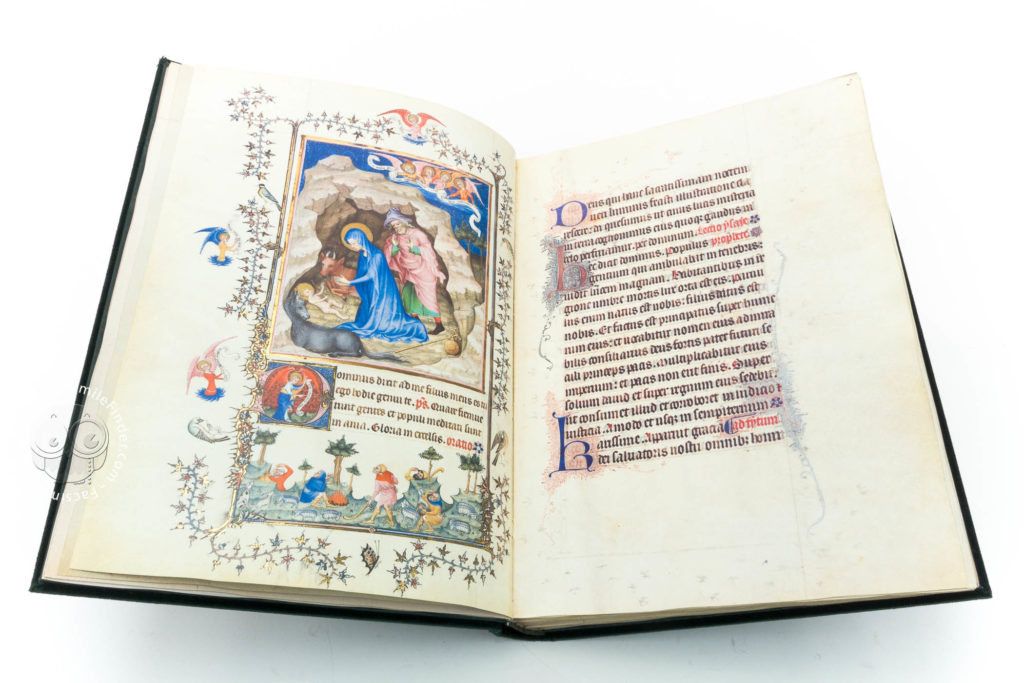
Get in touch with us for further information!
